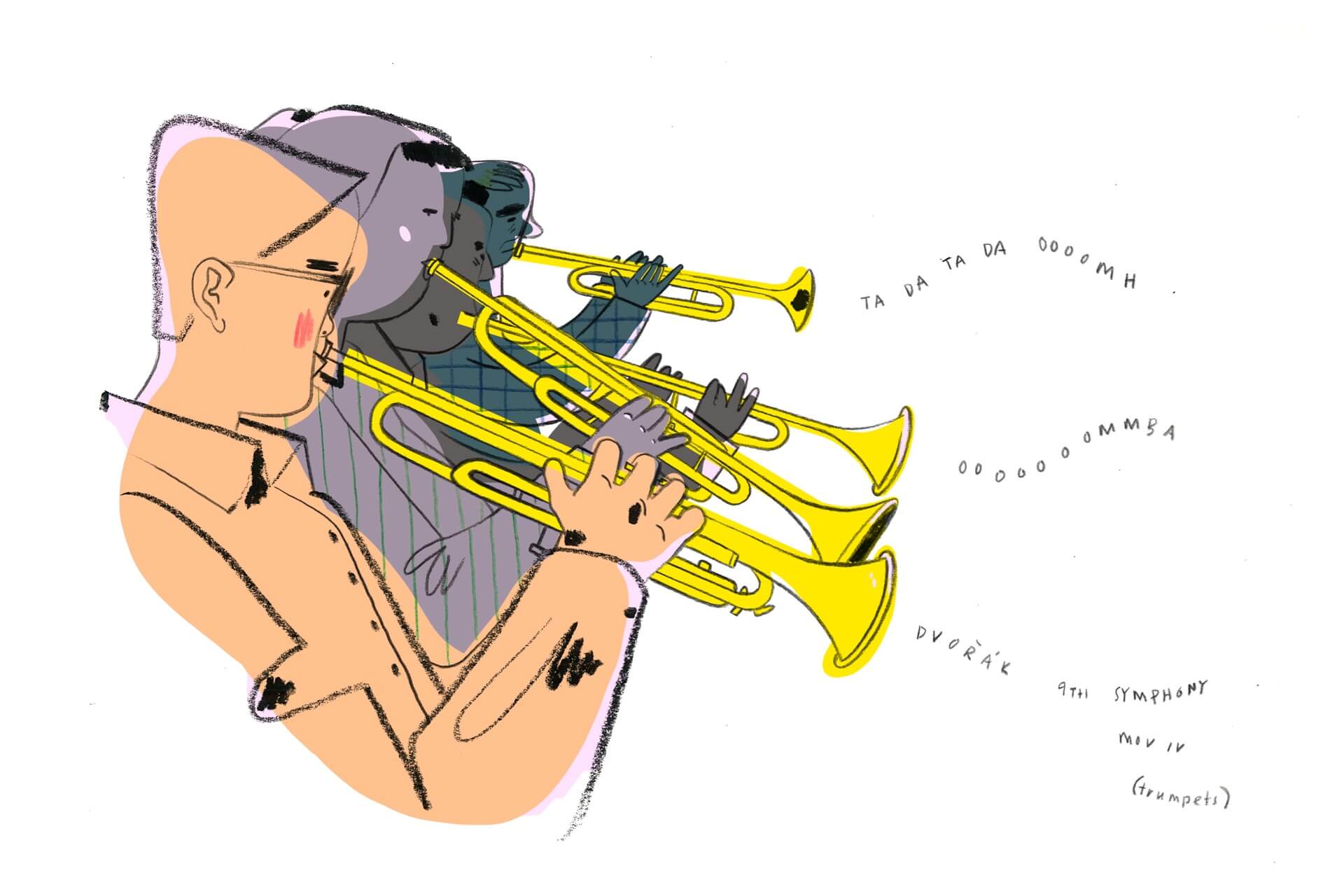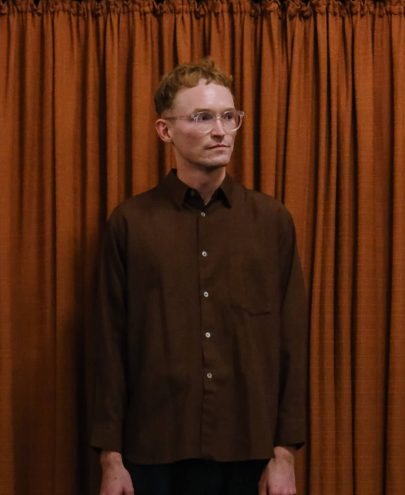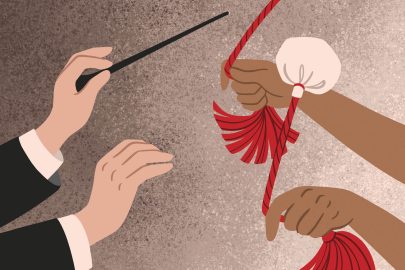Oct 29, 2023 Music
In 1895, while writing his Third Symphony, Gustav Mahler — who at the time was famous for being a conductor not a composer — invited his assistant conductor, Bruno Walter, to visit him at his summer getaway in Steinbach, Austria. Mahler met Walter at the ferry and as they made their way to Mahler’s composing hut, Walter looked up to the Höllengebirge mountain range, with its sheer limestone cliffs rising imposingly from an otherwise placid landscape. “You don’t need to look,” Mahler told him. “I have composed all this already!”
A hundred and twenty-eight years later, I am sitting in the Auckland Town Hall, watching the New Zealand Symphony Orchestra, under the baton of its new principal conductor, Gemma New, perform the symphony Mahler wrote that summer and the next. It starts with an account of the beginning of the universe. Light explodes out of nowhere. Atoms swirl, particles collide and evolve. Suddenly there is a world: rocks, lava, the chaos of creation. It is powerful, terrifying, dangerous, brutal. Soon, life appears. Plants emerge from the primal earth. Then summer, flowers and joy. This first movement is titled ‘Pan Awakes, Summer Marches In’ but it was initially called ‘What the Mountains Tell Me’, referring to the harsh cliffs Walter had been so taken by. As the symphony continues over an hour-and-a-half stretch (overused words like ‘epic’ and ‘sublime’ are seldom misused when it comes to Mahler), animals appear, then humans, angels and, finally, pure love.
I know I was there that night in April 2023, but I can barely remember it. I have flashes of memories — of New’s swirling arms; of the first playful theme passed from the oboe to a solo viola; of the dual choirs, one of children, one of adults; of two repeated words from mezzo-soprano Sasha Cooke (“Gib Acht! Gib Acht!” — the sound of the German more meaningful than any ‘Take heed!’ translation could be); and of the catharsis of the final movement. But I spent most of the evening in a receptive trance. In his earnestness, his grandeur, his playfulness, his pomposity, his fearlessness, his excess, his everythingness, Mahler (channelled through the medium of New and the NZSO) had me entirely. I may have been to concerts that were more fun, more interactive, more physical, more communal, more culturally relevant, but I can’t remember seeing a concert that made life feel brutal and meaningless, yet beautiful and joyous, all at the same time. “The message of that symphony is that you’re looking for the answer to life, and it’s love. The answer is love,” New tells me a few months later, as we recall the concert she calls “one of the greatest projects I’ve ever been a part of”.
A little over a year and a half ago, I wouldn’t have considered going that night. I’d heard of Mahler but had no conception of what his music sounded like until I bought a secondhand record of his Fifth Symphony from the sale bins of Real Groovy. I’d gone in search of something, but I didn’t know what. I wanted something new and found it somewhere very old. For a few dollars, I bought Mahler’s Symphony No. 5 (performed by Herbert von Karajan and the Berlin Philharmonic) and Ludwig van Beethoven’s String Quartet No. 15 (performed by the Italiano Quartetto).
I knew Beethoven, of course, but the Beethoven I knew was the opening of the Fifth Symphony (da-da-da-dummmm), the finale of the Ninth Symphony (the often cloying-sounding finale, ‘Ode to Joy’, so often used at Olympic ceremonies or state celebrations) and the achingly beautiful first movement of his ‘Moonlight’ Piano Sonata No. 14. I had no idea he wrote music like this — unflinching accounts of an illness that nearly killed him, the joyous relief of recovery and acknowledgement that death might nevertheless come soon (he would, in fact, die two years later). The so-called ‘late quartets’ are the last music he wrote and confounded those who heard them at the time. His contemporary Louis Spohr, a composer, called them “indecipherable, uncorrected horrors”; another musician remarked: “We know there is something there, but we do not know what it is.”
Beethoven’s string quartets were an important influence on Gustav Mahler. As one of the world’s premier conductors, Mahler knew Beethoven’s symphonies well, though he was born three decades after Beethoven’s death. In his own compositions he took the layered complexity of the late quartets and wove it together with the grandeur of Beethoven’s Ninth, the spirituality of Richard Wagner and Anton Bruckner and the philosophies of Friedrich Nietzsche and Arthur Schopenhauer. That I’d happened to pick up Mahler’s Symphony No. 5 — only slightly shorter and more accessible than No. 3, but no less monumental — soon felt like a serendipitous choice. Those first two records sparked an ongoing obsession, leading not only to the purchase of many more records, but also attendance at concerts. I became more and more aware of the ways in which classical music is entwined in our everyday lives. I was suddenly aware of this music in film soundtracks and ads, and even noted royalty-free synthesiser versions of Edvard Grieg’s ‘In the Hall of the Mountain King’ playing in the background of kids’ gaming videos on YouTube. The more I looked, the more I realised that it wasn’t just me who was finding new relevance in an art form many of us had previously written off, if we’d even considered it in the first place.
About a year into my classical music journey, I read a widely shared blog post by music writer Ted Gioia citing six recent studies and surveys that showed a sharp increase in classical music listening among young people. One survey found that respondents under 35 were more likely to listen to orchestral music than their parents; another that “more people are listening to orchestral music today as part of their daily lives than was the case before the pandemic”. But what surprised me most was that it wasn’t just based on people playing relaxing music on major streaming platforms (playlists with names like ‘Calming Classical’ and ‘Classical Music to Study to’ have hundreds of thousands of followers and millions of plays), but at the Metropolitan Opera in New York, single-ticket sales are up, the average age of single-ticket purchasers (as opposed to those who buy subscriptions) is down, and new works by living composers are selling out. Soon after, I read a review of the debut classical performance by Devonté Hynes (aka Dev Hynes), who has released critically acclaimed albums as Blood Orange, collaborated with artists like Solange Knowles and Carly Rae Jepsen, and was, by common consensus, one of the coolest people in the world in the 2010s. Finally, like many I saw the 2022 film Tár, starring Cate Blanchett as Lydia Tár, a world-famous conductor who is accused of abusing her power in a lesbian #metoo story. Tár’s narrative drive and its dramatic climax is based around the titular character’s upcoming performance of Mahler’s Fifth, which will finally complete her Mahler symphony cycle.
Was it because of Tár that the NZSO’s performance of Mahler’s No. 3 in April was sold out and buzzing with anticipation beforehand? The film had led to an increase in streaming numbers for the symphony — the 1993 recording by Claudio Abbado and the Berlin Philharmonic, which, in the movie, is used as inspiration for Lydia Tár’s own album cover, was for a time the first search result for the symphony on Spotify. Or, was it, as NZSO chief executive Peter Biggs suggested before the orchestra’s next Auckland concert (not sold out), the building excitement around Gemma New, who since her appointment last year has gone from career success to career success, including the announcement that she will lead the BBC Scottish Symphony Orchestra’s performance of Stravinsky’s The Firebird at this year’s Proms festival at the Royal Albert Hall?
New immediately defers to the composer himself. “There are so many good reasons to listen to Mahler,” she tells me. “I think it’s coming out of the pandemic … Everyone is so hungry and passionate for this music, you have to give it everything. And when you give everything to Mahler, it responds. There’s some music where it’s like, ‘Whoa, that’s too much, just play what’s on the page’. But with Mahler, we can really stretch and listen to each other and move in the moment organically, and that brings the deepest meaning. Because he was always looking for the meaning of life, or the reason for life. And what have we been doing all this pandemic? We’ve been revising what our lives are like, and trying to find the right balance, right motives — and so Mahler definitely speaks to us, both musically and philosophically.”
I wondered if that is what had spoken to me. Having loved music my entire life, and then formed my identity and community — and, at certain points, my livelihood — around it, in recent years my relationship with music had become increasingly dispassionate and transactional. Still enjoying music, sure. Still singing along in the car, still going to the occasional concert, still dancing when drawn to, yes. But it seldom had a deeper impact on me. In classical music, I found something that meant something. Something else. I knew there was something there; I just didn’t know what it was. I found myself in an excited spiral of search and discovery. This music with its reputation as being for old people made me feel younger, as if I were a teenager — hungry to find out everything I could about whatever I was listening to, hungry to make connections, hungry to subsume it into my very being. One night, returning from a concert, I told my wife, “I think I love music again.”
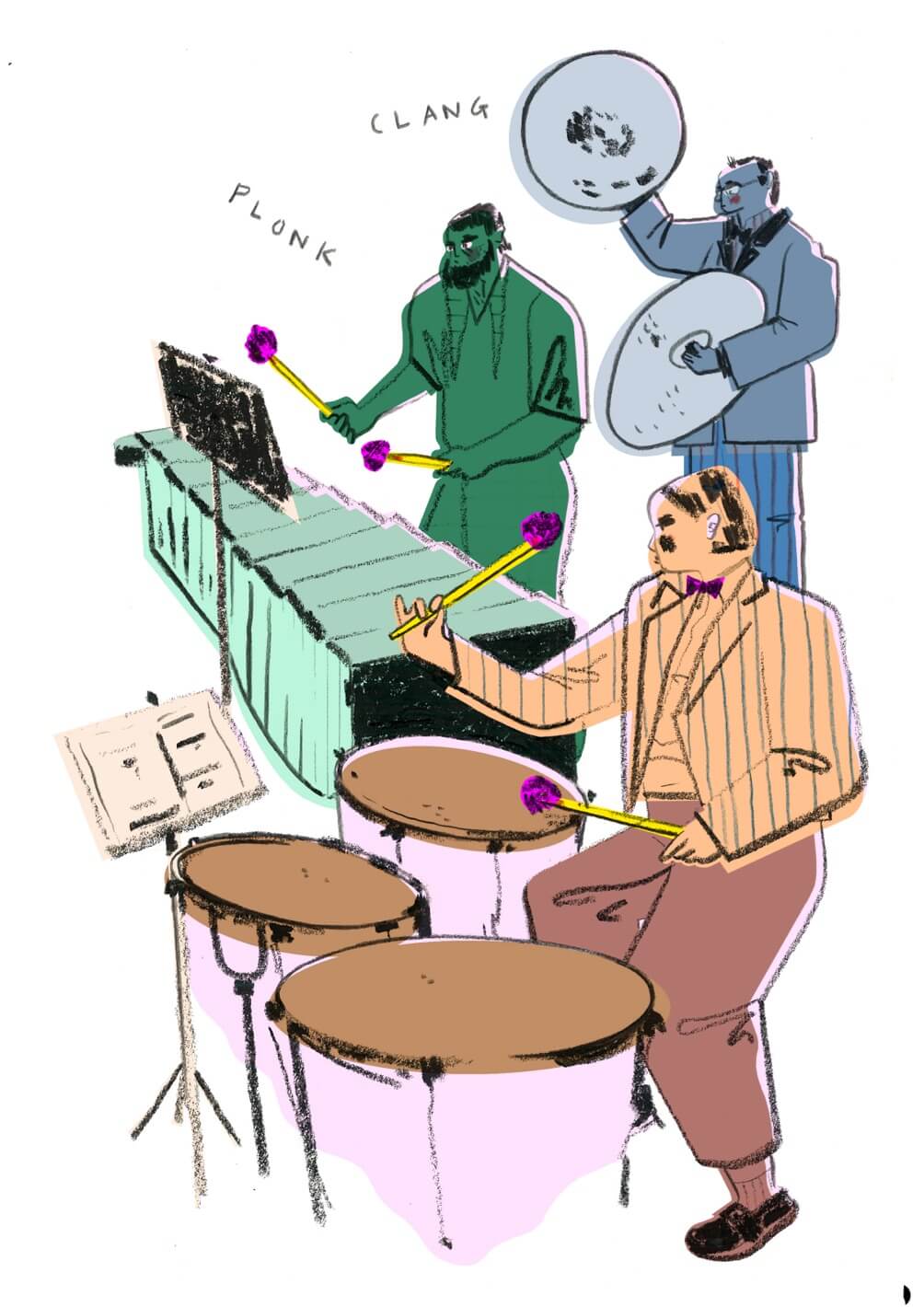
I started to find myself in conversations with friends, talking about my newfound ‘discovery’, and realised that I was coming across like a half-baked evangelist — telling the story of my conversion, sharing my scriptures, hoping that others might follow me down the rabbit hole. I was finding so much meaning in this music, mostly written hundreds of years ago by white men in Europe, who scratched out a living by competing with their contemporaries for commissions from royalty, the church or, later, just ordinary rich people. There was such a disconnect between what was conservative on the one hand — Eurocentric, colonial, patriarchal, old, literally conserved — and aesthetically radical on the other. When I heard Dmitri Shostakovich’s String Quartet No. 8 (which he may have intended as his own epitaph, to be performed after a planned-but-not-carried-through suicide) or Igor Stravinsky’s Rite of Spring (which caused a literal riot at its premiere in 1913), I couldn’t believe this was the music that had a reputation as being stuffy and retrograde, irrelevant or dead. To me, it sounded urgent, passionate, full of life.
I was also delighted to discover, usually in the opening works played by an orchestra before it gets to the marquee works on the programme, a world of classical music (or, as some prefer, ‘Western art music’ or ‘orchestral music’) that not only exists in the present, but also exists here in Aotearoa — often written by exactly the kinds of people classical music traditionally excluded.
At the Mahler concert in April, before the orchestra began the 90-ish-minute symphony, composer, singer and teacher Robert Wiremu performed ‘Tahuri koe ki te maunga teitei’, a waiata he’d written, commissioned by the NZSO, in response to Mahler’s symphony. “When I looked at the words Mahler used in the symphony in the final movements, they were very philosophical, very abstract, very difficult, and deep — Nietzschean,” Wiremu tells me. “And I didn’t really understand them very well. But when I looked at the titles for the movements, they were like a pepeha — acknowledging the mountains, acknowledging the river, acknowledging the trees. I thought, Well, I can do that. That’s a Māori form that already exists … I didn’t quite know how to put it together until I thought about this melody that I’d heard by Mahinārangi Tocker. I had met her in about 2000, singing backing vocals for a CD with Kiri Te Kanawa. She sang something on that CD, just two bars, that stuck in my brain for 23 years and the week before the concert, that piece came to me. Mahinārangi Tocker was the glue that brought it all together.”
For Somi Kim, pianist for NZTrio, a chamber music group which is run as a charitable organisation, the championing of the contemporary music of Aotearoa (not only by playing it, but by contextualising it where possible alongside the works by canonical Western composers) is a core mission. “There is such a stigma around classical music being elitist and people feeling like it’s something they really can’t relate to,” she says. “Before I joined the trio … I was very snobby about it. I’d been studying in Europe. I only wanted to perform music by dead old white guys. Because, y’know, ‘that’s the best music’. But because the trio has been so active in commissioning work from living New Zealand composers, it’s opened my eyes up to the importance of playing music that is written right now. That is what’s relevant. It’s the music of our time.”
Others agree that classical music can continue its rise in popularity, in small and large ways, and become a more relevant cultural force again. “I’m totally optimistic,” the chief executive of the APO, Barbara Glaser, tells me in her office in the Town Hall. “I think classical music is there for a reason. It’s kind of like asking if Rembrandt or Michelangelo or van Gogh are not relevant any more. No, I don’t. Because great art, in whatever form it is, it’s a miracle. It’s a human miracle that someone could actually create this stuff. Artistic expression is one of humanity’s greatest achievements.”
Similarly optimistic, unsurprisingly, is Gemma New, who talks about music with as deep a reverence and passion as I’ve ever heard anyone talk about anything. “I really believe in orchestral music, of all kinds, all styles. It helps us live better, and feel better, and come together and feel that joy, and be amazed by the virtuosity of our artists and in what happens when we come together and create beautiful, beautiful things. It’s something incredibly special.”
So what keeps people from attending classical concerts? For one, there’s the perceived formality (movie scenes of classical music concerts usually feature women in gowns and men in tuxedos but I’ve seen neither at the Town Hall), but also the unwritten rules. Not only are you meant to sit still and be quiet, you’re meant to clap only at the end of the piece, not the end of the movement. Loud, virtuosic climaxes come crashing down only to be met by shufflings in seats and a couple of coughs echoing around the concert hall. Sometimes, tentative clapping can break out at the ‘wrong’ moment, either out of ignorance or from sheer excitement. The clappers recoil, the non-clappers stay quiet. At an Auckland Philharmonia Orchestra concert in March, after the first movement of Beethoven’s Symphony No. 8, a small part of the crowd burst into applause, only to come to a halt when the rest of the audience didn’t follow them. After a pause, the conductor, APO’s music director Giordano Bellincampi, turned on the podium. “Sorry, I just need to say something,” he said with a grin. “This thing about not applauding movements came much later. In Beethoven’s time they would applaud if they liked it, and the orchestra would have played the same movement one more time. So please, please, don’t ever be afraid of applauding at the wrong moment. The only thing we don’t like is boos.”
The other misconception many have is that a classical concert will be boring. That would previously have been my main concern — what are you meant to do? You are sitting down for an hour and a half, with an intermission if you’re lucky (in Mahler there was none), to listen to a complex piece of music with almost no visual stimulus — no light show (opera excluded), no dancers (ballet excluded), just a hundred or so tightly packed musicians who make only slight movements. But I found attending classical music concerts to be meditative. With very little to focus on, the mind wanders. You find yourself in places of thought and states of emotion you wouldn’t be if you were being guided by an image or choreography. You don’t have to know what the music means (actually, as a largely abstract art form, much of it has no literal meaning, and trying to translate it rationally is often fruitless), you just have to be open to how it makes you feel — even if that feeling is, sometimes, boredom. “It’s actually really grounding to sit in a hall and focus on one thing for a period of time,” Glaser tells me. “Turn your phone off and actually just be in the moment — that’s a really wonderful feeling.”
And while I’ve come to love the music as music — not just the existential grandeur of Mahler or the astounding genius of the always inevitable-sounding Beethoven, but the astounding rhythm and bounce of the piano-playing of Martha Argerich or the intricate virtuosity of violinist Hilary Hahn — it’s that feeling that I’ve come to really crave, whether sitting in silence in the concert hall, on my stereo in the lounge as unquiet life goes on or in my headphones lying in the dark. In perfect and imperfect settings, I’ve found classical music takes me away from the need to be always connected, always on, always pinging with dopamine hits of fresh, bright stimuli. When I was 13, I would sit on the bus every day, listening to dubbed cassette tapes on my Walkman. I didn’t need anything else. I wasn’t also taking photos and sending them out into the world; I wasn’t also checking my inbox, or reading only the headlines of 50 news stories at once (though classical music can be a great soundtrack for those things, too). That feeling — that wonderful feeling — of not needing more is what I’ve found again in classical music and perhaps is what other people are finding, too. Being open, being curious, letting my mind wander, letting myself be taken somewhere while somehow still feeling right here. Not escaping the world, but — by being in the moment, being in myself — simply being present.
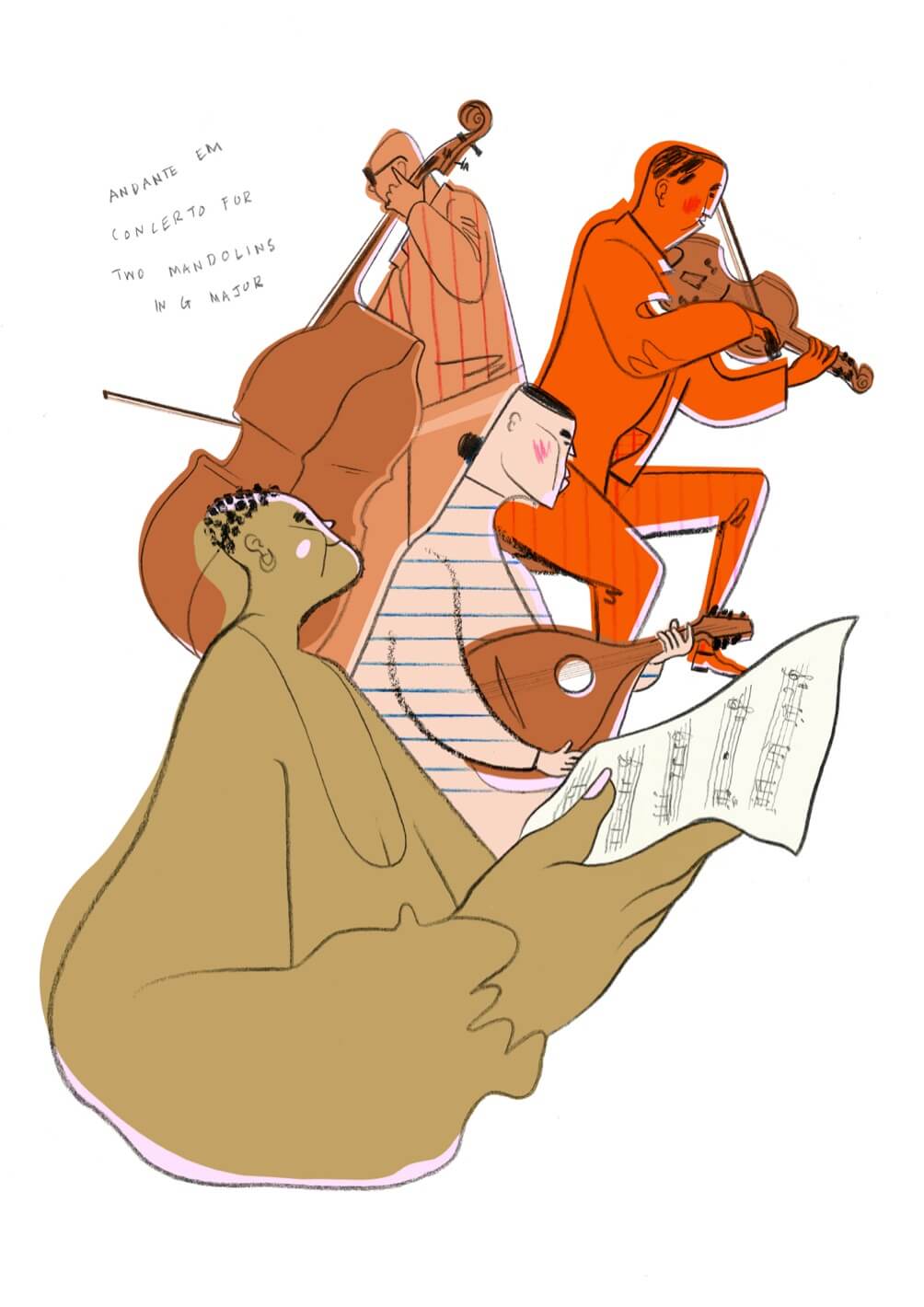
How to Listen to Classical Music in Concert
Just go. Don’t worry too much about who or what is playing (though advance-streaming some music from the programs of upcoming concerts can’t hurt), just get a couple of cheap tickets (going to a classical music concert at the Auckland Town Hall is around the same price as most entry-level local music gigs and usually cheaper than a movie) and take a friend.
Don’t go. If you are politically, economically, socially opposed to the whole classical music public funding complex (see Emil Scheffmann’s article in this issue), you’re probably going to find the whole thing annoying and the experience will likely reinforce any preconceptions you have. Just steer clear.
Be quiet. People really don’t like it when you talk or even whisper during the music.
Don’t clap until other people do. While it’s true that in the 19th century and earlier, classical music concerts tended to be quite rowdy affairs, where people drank a lot and made their opinions of the music apparent in real time (there have been numerous riots at classical music concerts), since the early 1900s, it’s been tradition that you make your appreciation known only at the end of the work. Oh, and you can’t walk in during a movement either.
Clap whenever you want to. Mozart is said to have been delighted when spontaneous applause erupted after a particularly spectacular passage and would probably be bummed at the thought of us all just sitting there after one of his dazzling keyboard solos. “I used to be so snobby about it,” Somi Kim, pianist for NZTrio told me, “but now I’m like, ‘Dude, if you enjoy it, just clap’.”
Let your mind wander. Classical music can be intricate and complicated and, as such, rewards close, concentrated listening. But it can also be quite long, and if your mind wanders, just follow it. Go meditative. It doesn’t mean you’re not paying attention — you might actually be paying attention on a deeper level.
Look at everything and nothing. Because performances of classical music tend not to have a strong visual component (let’s put ballet and opera to the side for the moment), sometimes it can be hard to know what to look at — you don’t want to just stare at the conductor the whole time. I like to watch the sections of instruments moving in unison. Or look at nothing at all: just go into a magic eye zone and see through the whole thing until it becomes one amorphous shape moving with the music.
Just go. Honestly, just give it a shot. Upcoming concerts I’m particularly looking forward to: The Auckland Philharmonia Orchestra playing Ravel’s Piano Concerto in G and Shostakovich’s Symphony No. 5 at the Town Hall on 17 August; and the NZSO playing Scriabin’s The Poem of Ecstasy along with works by Debussy, Sibelius and Ravel. I’m told there might even be a light show.
How to Listen to Classical Music at Home
Dive in wherever you can. Find a name or a work you’re familiar with or the least bit interested in and go from there. When you find a work you like, listen to different conductors’ versions of that work (this is honestly the biggest difference with rock/pop/whatever listening, where the first recording of the work is more often than not definitive and all others are covers).
Find a guide. There are many resources online to offer advice on what to listen to and nearly all of it is readily available on streaming services — though the search capabilities of these platforms don’t tend to serve classical music well, as it’s hard for them to know who the ‘artist’ is (the composer? the conductor? the soloist? the orchestra?).
Ignore the experts. Like what you like. Who cares if it’s supposedly the critical-consensus best version or ‘reference recording’?
Pay attention. Because classical music tends to prioritise development over repetition, the works generally include a lot of subtle detail and small changes that evolve into bigger changes, unfurling like a movie narrative. Close, concentrated listening can be extremely rewarding.
Don’t. Just put something on. Let it fill your room and seep into you as you attend to other things. Soon enough, some of it will find its way into your marrow.
–

